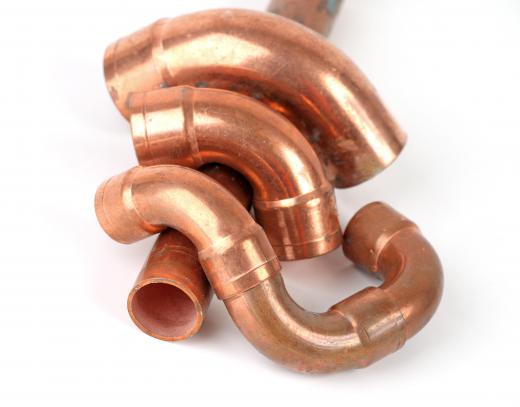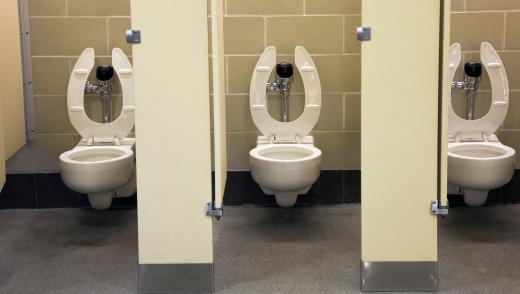A supply pipe is a plumbing line that is used to supply water to fixtures throughout homes and commercial buildings. These supply lines may connect to plumbing fixtures such as sinks, showers, bathtubs, toilets, and outdoor hose connectors. Together, the supply pipes and a second set of return or wastewater piping make up a complete plumbing system.
The water that runs through a supply pipe enters the home through a main water line, which is equipped with some form of shut-off valve or meter. Once the water enters the home, the supply pipe splits into two separate piping systems. One passes through the hot water heater to create hot water while the other continues through the home to carry cold water to the plumbing fixtures.

There are a number of different types of plumbing systems that include various water supply lines. The most basic is a looped system, where a single supply pipe carries water to all fixtures on all floors of the home. Branched systems are more complex, and consist of a main supply line that has branched off into separate floors or areas using multiple pipes.

Supply pipe can be made from a number of different materials depending on the application. Copper piping is one of the most common, and is primarily used for domestic water distribution. Copper is securely joined together using soldered fittings and requires very little maintenance over time. One major drawback to copper piping is its high cost. This material can also be difficult for novice installers to use properly due to the soldering that is required.

Polyvinyl chloride (PVC) is another popular option, though it can only be used for cold water. Chlorinated polyvinyl chloride (CPVC) supply piping can be used for water up to 140 degrees Fahrenheit (60 degrees Celsius). Both PVC and CPVC are very affordable and easy to install, but generally require more maintenance than copper.
Piping used in water supply lines must posses certain features to ensure it can safely transport water. The piping must be clean and non-reactive so that it won't contaminate or change the flavor of the water. It must also be installed correctly so that it won't leak, and should be sized properly to maintain steady pressure. Pipes that are sized too large will not be able to carry water over a long distance. Those sized too small may burst or leak due to high pressure levels within the pipe.
